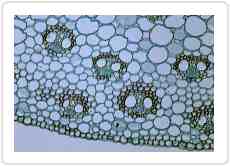Bright Field Microscopy
Bright field microscopy is the simplest of all the optical microscopy illumination techniques. Sample illumination is transmitted (i.e., illuminated from below and observed from above) white light and contrast in the sample is caused by absorbance of some of the transmitted light in dense areas of the sample. Bright field microscopy is the simplest of a range of techniques used for illumination of samples in light microscopes and its simplicity makes it a popular technique. The typical appearance of a bright field microscopy image is a dark sample on a bright background, hence the name.
Scanning probe microscopy involves the interaction of a scanning probe with the surface of the object of interest. The development of microscopy revolutionized biology and remains an essential technique in the life and physical sciences.
Bright field microscopy typically has low contrast with most biological samples as few absorb light to a great extent. Staining is often required to increase contrast, which prevents use on live cells in many situations. Bright field illumination is useful for samples which have an intrinsic colour, for example chloroplasts in plant cells.
